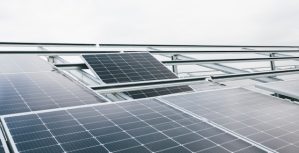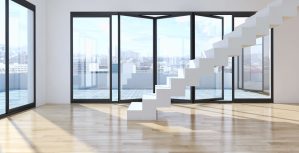The Effect Of Rooflights On Lighting And Energy Expenditures
Since winter is coming, everyone is thinking about how to stay warm without breaking the bank. Energy efficiency and thermal characteristics are important factors to think about when adding rooflights to a house or business. It’s a popular myth that having skylights in your house would reduce energy efficiency by allowing in more hot air in the warmer months and chilly breeze in the winter. When placed correctly, a skylight may significantly save heating, cooling, and lighting costs. So, there is no reason to panic; rooflight technology is rapidly advancing, and a large variety of eco-friendly, energy-efficient alternatives is now readily accessible.
Some people still believe that the expense of heating and cooling a building should go up if there are more skylights or roof lanterns installed. The Institute for Energy and Sustainable Development’s research refutes the assumption. The Institute, on the other hand, discovers that with the right amount of skylights installed, energy usage may be reduced.
Passive solar gain reduces the demand for artificial lighting in buildings that have good access to natural light. Incorporating skylights into a building’s architecture may significantly cut down on its overall energy usage and carbon dioxide emissions. An interior with plenty of natural daylight is much more comfortable to spend time in, uses less energy, produces fewer harmful pollutants, and saves money.
These are the results of a research conducted by the Institute of Energy & Sustainable Development at De Montfort University in Leicester and commissioned by the National Association of Rooflight Manufacturers (NARM).
One of the numerous benefits of natural sunlight is that it is cost-free and abundant. There are a number of elements to think about when determining the overall effect of skylights and glass on the energy efficiency of a structure.
The unit of illumination intensity is the lux. Circulation areas and meeting rooms are appropriate places for a light intensity of 300 lux since they don’t need the perception of fine detail. In many commercial, industrial, and office settings, including those where color judgment is important, lighting levels of 600 lux are recommended.
Total CO2 emissions can be reduced by installing more skylights, at a minimum within the range of 0 to 20 percent.
During the winter, skylights reduce the need for heating by letting in more natural light, making them particularly useful in offices and other spaces that are used mostly during daytime hours. Compared to a building without skylight windows, a structure that is inhabited from 9 a.m. to 5 p.m., every day of the year and has a lighting requirement of 600 lux may reduce its CO2 emissions from lighting and heat loss by an astounding 85%. There is no advantage to passive solar energy or natural light when a building with skylights is inhabited 24/7.
Skylights are not only beneficial during the day, but they may also save a lot of money on energy bills at night. There is a direct correlation between the square footage of skylights and the amount of energy saved when a minimum lighting level of 600 lux is required for a business facility. Increased energy efficiency correlates with the number of skylights installed. This is particularly relevant for structures with a lighting need of 300 lux. As the area of skylights grows in these dimly lighted structures, energy usage decreases even more. In places where just 300 lux of light are needed up until 14% of the space is occupied.
Skylights enhance the aesthetic value of your house and provide better lighting, but they also save you money on your electricity bill year-round because of how little heat escapes through the glass. They may serve as a source of lighting and warmth in the winter, and air conditioning in the summer. To get these advantages, you need to pick your skylights wisely and have them installed correctly.
Savings on energy costs and decreased carbon dioxide emissions are the cumulative results of installing skylights. Skylights increase a building’s ambiance, usefulness, and energy efficiency by letting in natural light and helping occupants feel better and focus better. For these reasons, installing skylights in business spaces is a great idea.
Share It on :





